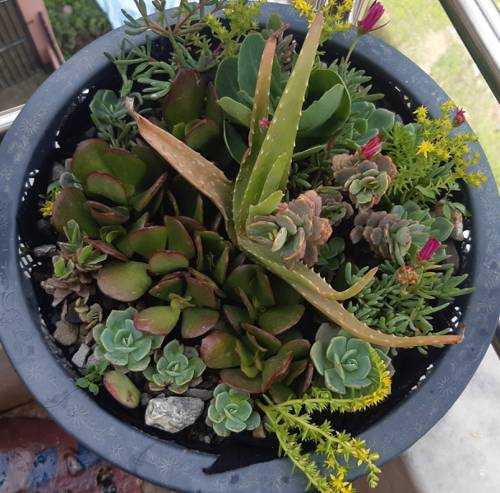
FAQ About Indoor Plant Nutrient Cycling

What is indoor plant nutrient cycling?
Indoor plant nutrient cycling refers to the process by which nutrients are absorbed, utilized, and recycled within an indoor plant system. This includes the uptake of nutrients from the soil or growth medium, their incorporation into plant tissues, and eventually their return to the soil as organic matter breaks down. This cycle promotes sustainable growth and reduces the need for external nutrient inputs.

Why is nutrient cycling important for indoor plants?
Nutrient cycling is crucial for indoor plants as it ensures the availability of essential nutrients over time, supporting healthy plant growth and development. By recycling nutrients within the system, it minimizes resource wastage and the need for additional fertilizers, which can be both economically and environmentally beneficial.

Which nutrients are involved in indoor plant nutrient cycling?
The primary nutrients involved in indoor plant nutrient cycling are nitrogen, phosphorus, potassium, calcium, magnesium, and sulfur. These macronutrients, along with micronutrients like iron, manganese, zinc, copper, molybdenum, and boron, play vital roles in various plant physiological functions.

How can I promote nutrient cycling in my indoor plant system?
Promoting nutrient cycling in indoor plants can be achieved by using a combination of organic matter such as compost or leaf litter, regular pruning to return plant matter to the soil, and employing microbial inoculants if needed. These practices help maintain the balance and availability of nutrients.

Can I recycle kitchen waste to help with nutrient cycling?
Yes, kitchen waste like vegetable peels, fruit scraps, and coffee grounds can be composted to create a nutrient-rich amendment for your indoor plants. Composting and using these materials as mulch or soil additives enhance nutrient cycling and soil structure.

What role do microbes play in nutrient cycling for indoor plants?
Microbes, such as bacteria and fungi, are crucial for nutrient cycling as they break down organic matter, releasing nutrients in forms accessible to plants. They help convert nutrients into plant-usable forms, thereby facilitating efficient nutrient uptake and recycling.

How does over-fertilization affect nutrient cycling in indoor plants?
Over-fertilization can disrupt nutrient cycling by leading to an excess of certain nutrients, potentially causing nutrient imbalances and toxicities. It can also harm microbial communities responsible for nutrient cycling, thus hindering the natural processes and contaminating the soil and water.

What are some signs that indicate poor nutrient cycling in indoor plants?
Poor nutrient cycling can result in stunted growth, yellowing leaves, nutrient deficiencies, and poor plant health overall. It can also lead to the build-up of salts in the soil, which further hampers plant growth and nutrient uptake.

How often should I amend soil to enhance nutrient cycling for indoor plants?
The frequency of soil amendment depends on the specific plant needs and the type of growing medium used. Generally, adding organic matter every 2-3 months or whenever signs of nutrient deficiency appear can help maintain efficient nutrient cycling.

Is it necessary to use synthetic fertilizers for efficient nutrient cycling?
It is not necessary to rely solely on synthetic fertilizers for nutrient cycling. Organic methods using compost and natural amendments can efficiently recycle nutrients and support healthy plant growth. However, synthetic fertilizers can be used as a supplement if specific deficiencies are identified.

How does indoor plant nutrient cycling differ from outdoor plants?
Indoor plant nutrient cycling can differ from outdoor plants due to confined space, limited soil organisms, and more controlled environmental conditions. These factors can restrict the natural processes, requiring more active management of soil health and nutrient inputs.

Can hydroponic systems support nutrient cycling for indoor plants?
Yes, hydroponic systems can support nutrient cycling, albeit differently from soil-based systems. In hydroponics, recirculating systems reuse nutrient solutions, effectively recycling nutrients directly through water. However, balancing nutrients in hydroponic setups requires careful management.

Are there specific plants that improve nutrient cycling indoors?
Certain plants, like legumes and those with symbiotic relationships with mycorrhizal fungi, can enhance nutrient cycling by improving soil health and structure. These plants can contribute organic matter and support beneficial microbial activity.

What is the impact of pH on nutrient cycling in indoor plants?
Soil pH significantly impacts nutrient cycling by affecting nutrient availability and microbial activity. Most indoor plants prefer a pH range between 6.0 and 7.0. pH that's too high or too low can lock nutrients in the soil, making them unavailable to plants, thus disrupting nutrient cycling.

How does indoor plant nutrient cycling contribute to sustainable living?
Indoor plant nutrient cycling promotes sustainable living by reducing dependency on synthetic fertilizers, minimizing waste through recycling organic matter, and fostering a healthier indoor ecosystem. It supports the principle of reduce, reuse, and recycle in domestic plant care.

What are common misconceptions about nutrient cycling in indoor plants?
Common misconceptions include the belief that all nutrients must come from external fertilizers, or that indoor plants do not require regular nutrient recycling. In reality, indoor plants benefit significantly from a managed nutrient cycle through organic amendments and microbial activity.

Can pruning affect nutrient cycling in indoor plants?
Yes, pruning can impact nutrient cycling positively by helping manage plant size and returning organic matter to the soil. Pruned plant parts can decompose, releasing nutrients back into the soil, fostering a closed-loop nutrient cycle.

How can I measure the effectiveness of nutrient cycling in my indoor garden?
The effectiveness of nutrient cycling can be gauged by observing plant health, growth rate, and onset of any nutrient deficiencies. Regular soil testing for nutrient levels can also provide insights into the status of nutrient cycling.

Can companion planting enhance nutrient cycling indoors?
Companion planting can enhance nutrient cycling by promoting beneficial interactions between plant species. For instance, pairing nitrogen-fixing plants with others can boost nitrogen availability, benefiting overall nutrient cycling and plant health.

What tools or products assist with nutrient cycling in indoor plants?
Products such as compost, worm castings, and biochar can improve nutrient cycling. Tools like pH meters, soil moisture sensors, and compost bins help monitor and maintain optimal conditions for nutrient cycling in indoor plant systems.
